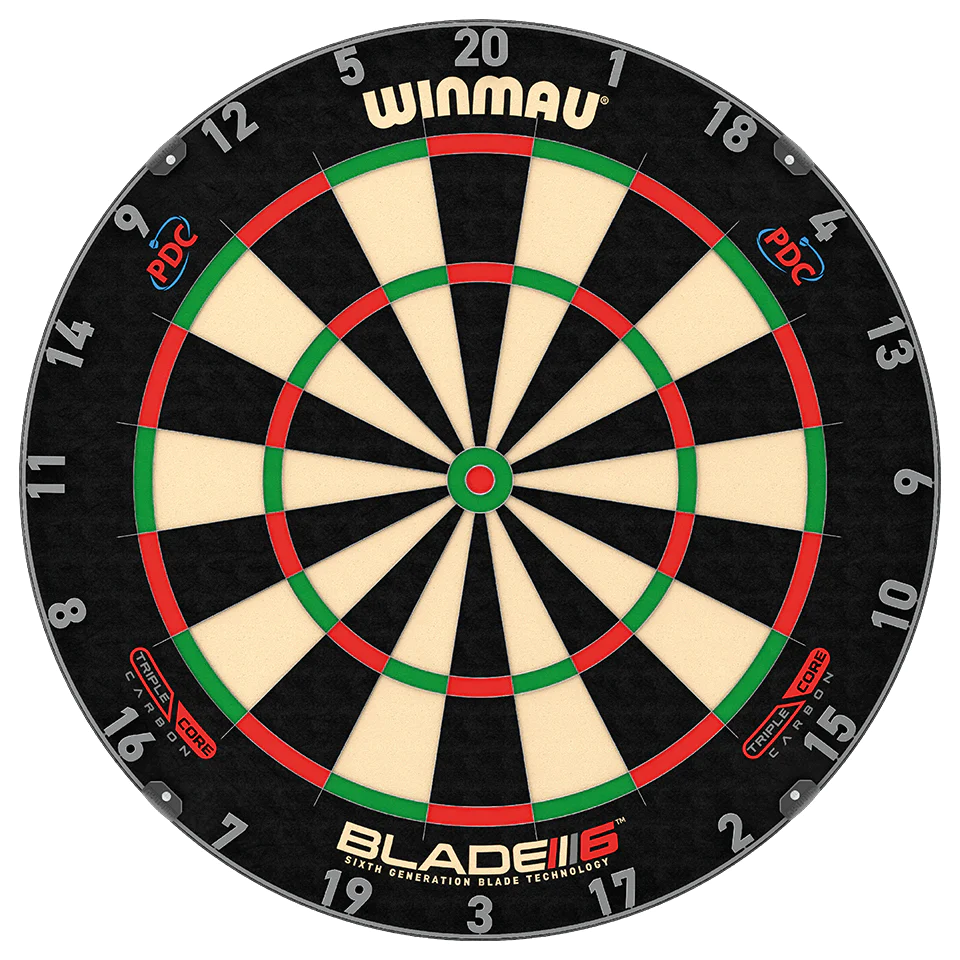Improve your dart-throwing with proper technique, grip, stance, and release. Master these elements to enhance accuracy and consistency.
Throwing darts with precision isn’t just a game of chance; it is a skill honed by practice and proper technique. Whether you aim to become a professional dart player or just want to impress friends at the pub, getting the basics rights can significantly improve your game.
Your grip should be firm yet relaxed, providing control without strain. Stance plays a crucial role in maintaining balance and creating a solid base for your throw. Additionally, a consistent release ensures the dart travels smoothly toward its target. Understanding and perfecting these aspects can make all the difference between a novice and a skilled darts player. Elevate your game by focusing on these foundational elements of dart throwing.
The Art Of Darts: Beyond The Basics
Gaining prowess in darts involves much more than simply hurling small missiles at a circular target.
Mastering the proper technique, grip, stance, and release elevates your game from amateur to expert.
Let’s dive into advanced tips and tweaks to enhance your performance.
Fine-tuning Your Throw
Consistency is king in darts.
Precise throwing requires focused practice and attention to the smallest details.
- Start with a comfortable grip that doesn’t strain your fingers.
- Align your aim with your dominant eye for increased accuracy.
- Use a fluid, repeatable throw motion to maintain consistency.
- Practice with purpose, focusing on weaknesses and refining your strengths.
Subtle Changes, Big Differences
Minor adjustments in your darts routine can lead to significant improvements.
Alter one variable at a time and judge its impact on your game.
| Adjustment | Possible Impact |
|---|---|
| Stance Width | Better balance and control |
| Elbow Position | Enhanced throw trajectory |
| Grip Pressure | Improved accuracy and comfort |
Record your performance to visually track progress.
Every subtle change is a step closer to darts excellence.
Gripping Success: Dart Holding Techniques
An essential key to dart-throwing precision lies in mastering the grip. The right grip enhances control and accuracy, paving the way for consistent performance. Discover the secrets to holding darts effectively for improved gameplay.
Finding The Perfect Grip
Finding the perfect grip is a personal journey. You need to consider dart weight, barrel shape, and your comfort. Aim for a grip that’s firm yet relaxed — tight enough to control the dart’s path, but not so much that it causes tension. Experiment with different pressures and contact points until you land on one that feels like an extension of your arm.
Common Grip Styles Explained
Diversity in grip styles caters to players’ unique needs. Familiarize yourself with common methods to refine your hold:
- The Standard Grip: Involves holding the dart with at least three fingers — the thumb, index, and middle finger.
- The Stacked Grip: Fingers are positioned closely, like a stack, providing more control for some players.
- The Fan Grip: Fingers spread out over the dart, offering stability and balance.
- The Pencil Grip: Similar to holding a pencil, suitable for players with a delicate touch.
Assess these styles during practice sessions. Observe which technique helps maintain a consistent flight and accurate landing.
| Grip Style | Fingers Used | Description |
|---|---|---|
| Standard Grip | 3 or more | Thumb and one or two fingers on top |
| Stacked Grip | 3 or more | Fingers closely aligned for control |
| Fan Grip | 3 to 5 | Fingers spread for stability |
| Pencil Grip | 2 or 3 | Light touch, like holding a pencil |
Focus on precision, comfort, and the dart’s path with each throw. Your grip influences the dart’s speed, angle, and destination. Practice is key. Feel each grip and notice the dart’s behavior. Opt for the style that secures success on the scoreboard.
Stance Matters: Positioning For Precision
Improving your dart-throwing technique starts with how you stand. Your stance acts as the anchor of your whole body. Get this right, and you’re laying the groundwork for success.
The Stable Foundation
A stable stance sets the tone for everything that follows in your dart game. Stand too rigid and you risk discomfort; too relaxed and your darts lack direction. Strive for a balanced and consistent position that you can replicate with ease.
- Keep your weight evenly distributed on both legs
- Align your shoulders with the target for a straight posture
- Maintain a slight lean forward to stay dynamic
Foot Placement Nuances
Foot placement can make or break your throw. Small changes in where your feet land dictate the trajectory of your darts.
| Front Foot | Back Foot | Effect on Throw |
|---|---|---|
| Pointing forward | Stable and supportive | Direct and focused aim |
| Angle aside | Bracing weight | Greater balance but requires practice |
Aiming Techniques: Strategies For Accuracy
Mastering the dart throw is all about accuracy. Sharpening aiming techniques can turn beginners into pros. Let’s explore strategies that fine-tune accuracy.
Focusing On The Target
Concentration is key. Before throwing, take a moment to clear your mind. Lock your eyes onto the exact spot you want the dart to hit. Keep your gaze steady.
- Breathe calmly and avoid distractions.
- Maintain focus until the dart is released.
Think of it like taking a photo; the target should be in perfect focus with everything else blurry.
Visual Alignment Tips
Proper alignment guides the dart straight to the target. Use these visual cues:
- Line up your dominant eye with the dart and the target.
- Imagine a straight line extending from your eye to the point on the board.
- Keep the dart tip within this line during the throw.
| Body Part | Alignment |
|---|---|
| Eyes | Focus on target |
| Shoulder | Stable & aligned with the target |
| Arm | Straight follow-through |
Your body should form a human aiming sight.
The Power Of Posture In Darts
Throwing darts involves more than just your arm. Your entire body contributes to the precision and power of your throw. Proper posture is key to mastering this skill. Let’s delve into how upper body alignment and balance can improve your darts game.
Upper Body Alignment
Aligning your upper body correctly is crucial for a straight, accurate throw. Stand with your dominant foot slightly forward. Keep your shoulders level and poised. Your throwing arm should be straight and directed at the target. This position reduces strain and improves accuracy.
| Do | Don’t |
|---|---|
| Keep shoulders level | Slouch or hunch over |
| Arm straight toward target | Let arm waver or drop |
Maintaining Balance During The Throw
Balance affects your dart’s trajectory. A solid stance keeps you steady. Distribute your weight evenly across both feet or lean slightly on your forward foot. This grounds you, allowing a fluid, controlled release.
- Distribute weight evenly
- Keep feet firmly planted
- Lean faintly forward, if needed
Practice these posture principles and soon you’ll see a marked improvement in your dart throws. Remember, consistency is key. Keep working at it and you’ll throw with confidence and precision.
Mastering The Release: Timing And Technique
Perfecting your dart throw isn’t just about a steady hand or sharp aim. The release, a critical moment in your throw, dictates whether your dart sails smoothly or goes awry. Understanding the complexity of release timing and technique elevates your game from amateur to ace.
The Seamless Release
To ensure a seamless release, sync your arm and hand movement. As your forearm moves forward, your fingers should let the dart go at the optimal point. It’s like releasing a bird into the wind. Start with your arm at a comfortable angle and as you thrust forward, let your wrist snap just before the full extension of your arm. The goal is to create a consistent path for each throw, reducing variables and increasing accuracy.
- Align your forearm and target line.
- Allow for a natural wrist snap.
- Release the dart at eye level for consistency.
Common Release Mistakes To Avoid
Avoid these pitfalls to keep your release sharp and your darts on point:
| Mistake | Impact | Fix |
|---|---|---|
| Jerky motion | Causes inaccuracy | Smooth arm motion |
| Delayed release | Affects trajectory | Practice timing |
| Gripping too hard | Hinders release | Loosen grip |
- Don’t rush your throw; stay calm.
- Keep your grip consistent and not too tight.
- Avoid snapping your wrist too hard or too softly.
By focusing on the seamless execution of your release, you’ll find your darts hitting the mark with greater precision. Remember, practice makes permanent, so invest time in getting the timing and technique right.
Practice Regimens For Consistent Improvement
Improving your dart throwing is not just about technique — it’s about practice. To get better, you need a plan. Here, we break down how to create a practice schedule and utilize targeted drills to enhance key skills for remarkable results.
Building A Practice Schedule
Consistency is key in any practice regimen. Aim to throw darts daily. This helps muscle memory and improves accuracy over time. Below is a simple weekly practice schedule to help you stay on track:
| Day | Focus Area | Time |
|---|---|---|
| Monday | Stance and Grip | 30 minutes |
| Tuesday | Target Practice | 45 minutes |
| Wednesday | Scoring Combos | 30 minutes |
| Thursday | Rest Day | |
| Friday | Technique Review | 30 minutes |
| Saturday | Match Simulation | 1 hour |
| Sunday | Long-distance Throws | 45 minutes |
Targeted Drills For Key Skills
Focus on drills targeting specific areas for improvement. Here are some drills that are effective:
- Around the clock: Hit each number in sequence.
- Cricket: Focus on closing numbers efficiently.
- 501: Practice checkout strategies.
- Doubles drill: Hit each double until you’re consistent.
Record your scores for each session. Seeing progress will motivate you to keep practicing.
Mental Game: Focus And Strategy On The Oche
Playing darts isn’t just about how you throw; it’s also about your head game. Strong focus and clever strategy make the difference between a good player and a great one. Hone your mental skills to match your physical ones, and you’ll see your game soar.
Concentration Techniques
To throw darts better, a laser-sharp focus is key. Several techniques can help improve concentration and keep you in the zone:
- Breathing exercises: Slow, deep breaths can calm your mind and sharpen focus.
- Visualization: Picture your dart hitting the bullseye to boost confidence and aim.
- Pre-throw routine: A consistent set of steps before each throw can enhance focus.
Practicing these techniques regularly can help you stay focused during the game.
Competitive Mindset Building
Building a winner’s mindset is just as important as mastering technique. Developing a positive and competitive mindset includes:
- Setting realistic goals: Aim for personal bests to stay motivated.
- Leveraging inner dialogue: Use positive self-talk to boost your confidence.
- Analyzing past performances: Learn from errors without dwelling on them.
Work on your mental game, and you’ll handle pressure better when facing opponents.
Advanced Tactics And Throw Variations
Diving deeper into the art of darts involves mastering advanced tactics and incorporating throw variations. This section will explore key strategies to adjust your throws based on different distances and angles. Plus, you’ll learn about special throws that can add versatility to your game.
Adjusting For Distances And Angles
Understanding the dynamics of your dart’s flight path is crucial. Here’s how to adjust for different scenarios:
- Stand Closer or Further: Depending on the distance to the board, fine-tune your stance.
- Change Your Grip: For longer shots, a firmer grip may improve control.
- Alter Your Aim: Factor in gravity’s pull on the dart over longer distances.
Practice these adjustments to ensure your darts hit the mark regardless of the throw’s complexity.
Special Throws In Your Arsenal
Add these special throws to surprise your opponents and enhance your game:
- Lob Throw: Arc the dart higher for a soft landing on the board.
- Fast Flick: A quick wrist flick to speed up the dart for a flatter trajectory.
- Sidearm Toss: Release the dart with a sidearm motion to curve around obstacles.
Each throw requires practice but can be a game-changer during crucial moments.
Troubleshooting Common Darting Problems
Ever find yourself throwing darts that zigzag like a lost bee? It’s time to hone your skills and correct common problems. Whether you’re an amateur or a seasoned player, understanding what’s going amiss is key. Here’s how to pinpoint and fix those darting dilemmas.
Diagnosing Your Errors
First, let’s figure out what’s going wrong. Are your darts diving or soaring? It could be your release. Struggling with accuracy? Your stance might need tweaking. Keep a diary of your throws. Note patterns and conditions when you play. By spotting the trends, you’ll identify the issues.
- Inconsistent aim? Check your eye alignment.
- Erratic flight path? Look at your dart’s grip and release.
- Darts landing low? Your follow-through may be the culprit.
Corrective Measures And Adjustments
Now, for the fixes! Try these simple yet effective tweaks to up your game.
| Problem | Solution |
|---|---|
| Darts veering left or right | Firm up your stance. Keep feet steady and aligned with the target. |
| Sudden drops in dart flight | Fine-tune your grip. Hold the dart like a pencil, not a hammer. |
| Lack of precision | Use a consistent pre-throw routine. Repeat the same steps every time. |
Practice with purpose. Focus on one adjustment per session. Over time, small changes lead to big improvements. Remember, patience and persistence are your allies in the darting arena.
Equipment Choice: Darts And Accessories
Your journey to mastering darts begins with the choice of equipment. Quality darts and the right accessories can enhance your game. They lead to better grip, stance, and release. This section dives into selecting the perfect darts and understanding how accessories can impact your performance.
Selecting The Right Darts
Choosing darts is a personal affair. Consider weight, balance, and shape. It affects your throw style and comfort. Try different types to find what suits you best.
| Dart Feature | Importance |
|---|---|
| Weight | Affects control and flight. |
| Balance | Ensures stable trajectory. |
| Shaft & Flight | The key for accuracy and precision. |
The Impact Of Accessories
Accessories include flights, shafts, and cases. They keep your gear in top condition. Good accessories mean consistent performance.
- Flights: Stabilize darts during flight.
- Shafts: Connect the barrel to the flight.
- Cases: Protect darts and keep them straight.
Remember, changing accessories changes your dart’s feel and behavior. Test accessories under playing conditions to find the best fit.
Learning From The Pros: Tips And Insights
To boost your dart-throwing game, it’s vital to study the methods that professional players use. Darts legends have honed their skills through years of practice and competition. They offer invaluable advice on technique, grip, stance, and release. Let’s explore proven strategies from dart champions and understand how they achieve precision and accuracy with every throw.
Pro Techniques Revealed
Understanding the subtleties of a pro’s technique can significantly improve your own performance. Here are some critical parts of a pro’s dart-throwing arsenal:
- Aim with intention: Pros always focus their eyes on the exact spot they aim to hit.
- Smooth backswing: A controlled pullback ensures a stable launch.
- Consistent stance: Keeping a uniform posture aids in balance and repetition.
- Follow-through: A straightforward motion towards the target prevents dart wobble.
Inspirational Dart Legends
Learning from dart legends motivates players to refine their skills. Here is a list of some dart icons and key insights from their playing style:
| Legend | Achievements | Signature Move |
|---|---|---|
| Phil Taylor | 16x World Champion | Unmatched precision and focus |
| Michael van Gerwen | Multiple PDC titles | Fast and furious throws |
| Eric Bristow | 5x World Champion | Confidence and stage presence |
Emulate their strategies and practice them in your games to see improvements. Remember, becoming a darts master is about practice, patience, and persistence.
Frequently Asked Questions Of How To Throw Darts Better: Technique, Grip, Stance And Release
How Can I Improve My Dart Release?
To improve your dart release, maintain a consistent grip and stance. Practice a smooth follow-through and focus on a fixed aim point. Adjust your release angle and force for precision. Regularly analyze and refine your technique for steady improvement.
What Is The Proper Stance For Throwing Darts?
Stand with your dominant foot slightly forward, and align your toes with the throw line. Keep your body still, lean your upper body slightly forward, and balance your weight on your leading leg. Grip the dart comfortably and raise it to eye level, aiming directly at the target.
How Do You Hold And Release A Dart?
Hold the dart with a relaxed grip between your thumb and forefinger, aligned with the dart’s center of gravity. Steadily pull your arm back, aim, then smoothly release the dart with a flick of the wrist, following through with your hand pointing towards the target.
What Is The Most Effective Way To Throw A Dart?
Stand with a relaxed posture, aiming at the dartboard’s bullseye. Grip the dart firmly yet gently. Align your eye, the dart, and the target. Execute a smooth, controlled throw, releasing the dart in a straight line. Follow through with your throwing hand to ensure accuracy.
Conclusion
Perfecting your dart-throwing skills is a blend of mastering technique, grip, stance, and release. Focus on these key elements, practice consistently, and watch your accuracy soar. Embrace the journey towards becoming a darts champion, one steady throw at a time.
Ready, aim, and hit the bullseye!




